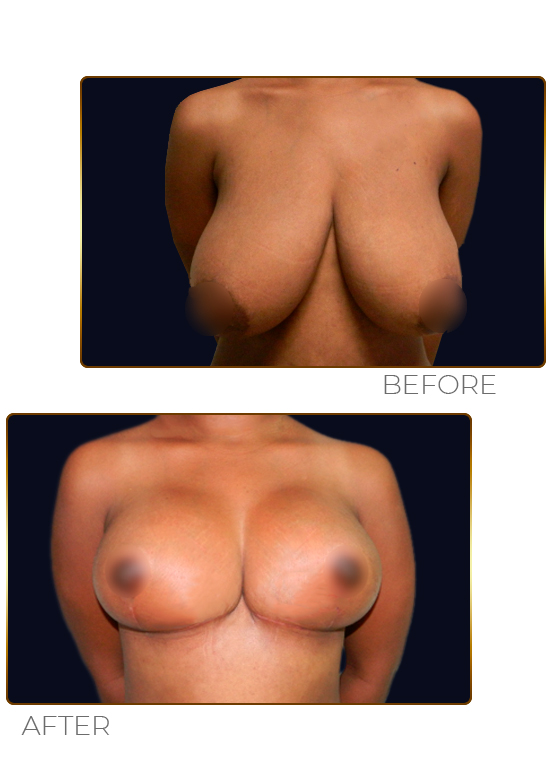Breast Reduction
Breast reduction surgery, also known as reduction mammoplasty, is a procedure that is designed to reduce the size of the breasts by removing excess fat, tissue, and skin.
This procedure is ideal for women who have breasts that are disproportionately large in relation to their body, and are experiencing discomfort, pain, or limited mobility due to their breast size.
During the breast reduction surgery, the surgeon will make an incision around the areola and down to the breast crease, removing excess tissue, skin, and fat. The nipple and areola may also be repositioned to a higher position on the breast mound to achieve a more natural appearance. After the surgery, patients typically experience a reduction in physical symptoms associated with large breasts, such as back, neck, and shoulder pain. They may also experience an improved ability to participate in physical activities, better posture, and an increased sense of confidence and self-esteem.


Frequently Asked Questions
What is breast reduction surgery?
Breast reduction surgery is a procedure that removes excess fat, tissue, and skin from the breasts in order to reduce their size.
Who is a good candidate for breast reduction surgery?
Women who have breasts that are disproportionately large for their body size and who experience discomfort such as back, neck, or shoulder pain may be good candidates for breast reduction surgery.
What happens during a breast reduction procedure?
During a breast reduction procedure, excess breast tissue, fat, and skin are removed from the breasts, and the remaining tissue is reshaped to create smaller, more proportional breasts.
How long does the recovery period last after breast reduction surgery?
The recovery period after breast reduction surgery typically lasts several weeks, during which time patients should avoid strenuous activity and follow their surgeon’s post-operative care instructions.
Will there be scarring after breast reduction surgery?
Yes, there will be some scarring after breast reduction surgery, but the scars will fade over time and can often be hidden under clothing or swimwear.
Is breast reduction surgery covered by insurance?
In some cases, breast reduction surgery may be covered by insurance if it is deemed medically necessary to alleviate symptoms such as back pain.
How long does breast reduction surgery take?
Breast reduction surgery typically takes several hours to complete, depending on the extent of the procedure.
Will I be able to breastfeed after breast reduction surgery?
Breast reduction surgery can sometimes affect a woman’s ability to breastfeed, but this is not always the case. Women who are considering breast reduction surgery should discuss their concerns with their surgeon.
What are the risks of breast reduction surgery?
Like any surgical procedure, breast reduction surgery carries some risks, such as bleeding, infection, and adverse reactions to anesthesia. Patients should discuss the potential risks and complications with their surgeon prior to the procedure.
How long do the results of breast reduction surgery last?
Breast reduction surgery can provide long-lasting results, but factors such as weight gain or pregnancy can affect the appearance of the breasts over time.


